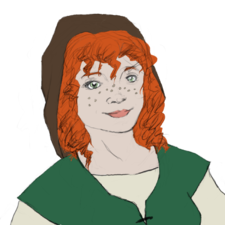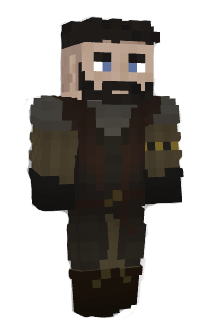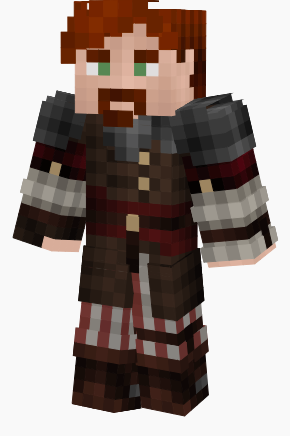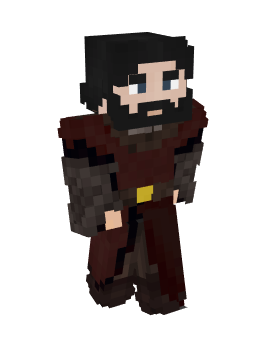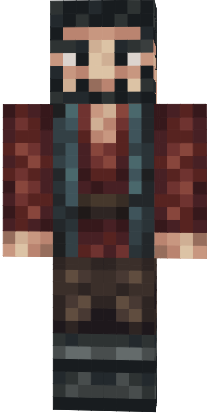Highlanders
| ||||||||||||||
The Highlanders are a human cultural group, made up of pioneers, yeomen, and all those who choose to live in the rougher corners of the world. Generally of a smaller and more spread population than the city dwelling Heartlanders, they lead rougher lives in the wilderness and on warpaths. The variation in their culture is great, made up of a great many nations & groups who maintain a solid nucleus of population separate from the population centers of the Heartlanders. Good examples of Highlander cultures are the Hansetian, Haense, Raevir, & Norland.
Contents
Physical Attributes
Skin Coloration
Pale skin is common amongst the Highlanders, but so are darker complexions & tans. Many laborers are part of this group, and many are olive-skinned or otherwise darker from sun exposure. Additionally, even those who are pale generally do not show the pink health of the Heartlanders.
Hair Coloration
Beyond that, traits vary wildly depending on the specific culture and people group being addressed. However, a general range can be found. Hair color ranges from black, brown, auburn, blonde, & ginger.
Eye Coloration
Eye color also ranges greatly, with blue, grey, hazel, amber, brown, & many shades of green found across the Highlander populace.
Height
The usual Highlander height range is 4'8"- 6'4" ft. This is larger than the general Heartlander range, given the larger body types & heights found amongst the Highlanders.
Lifespan
Like all of Horen’s descendants, the Highlanders can live a maximum of 150 years. Similar to Heartlanders, however, there is a general pattern & lifespan the usual Highlander will live. This is 60-90 years, approximately the same as Heartlanders. This is, however, for different reasons. Unlike the luxurious & squalor of Heartlander life, Highlanders tend to lead rough lives. These rougher lives, usually full of labor and work to survive on the outer edges of civilization, mean that the average Highlander will grow old and die anywhere within the given range of 60 to 90 years.
Culture
Unlike their kin of the heartland, the Highlandic peoples are divided into various subgroups such as the Raev, Kaedrini, Norlandic, and Haeseni which are all unique and occasionally at odds. It's a miracle they have been grouped by historians into such a broad term as each draws upon different ancient traditions, with different styles of combat, beliefs and tenets, and amongst many other differing political allegiances.
Haeseni: The Haeseni people (also known as Edlervik in their native Naumariav) are ethnic natives of the Kingdom of Haense, most dominantly bearing black, dark brown or dirty blonde hair and bright blue eyes, sometimes brown-ish or green, and fair skin. Their identity can be traced to the end of Schismatic Wars in the late 1400s, where the recently-conquered Hanseti were subjugated by a new Raevir governing elite. Historically, the recognized 'beginning' of the Haeseni is the coronation of Petyr Barbanov in 1579 to the thrones of Hanseti and Ruska, later shortened simply to Haense. However, in years prior to the coronation, the upper class of the mixing Hanseti and Raevir cultures had begun to mold unique customs and legal systems, and especially following the disastrous War of the Ducal Confederation of the late 1510s, began to associate themselves as natives rather than Raevir settlers. The unified culture of the 'haeseni' thrives when enforcing its traditions of rough militant life, honor, and family. They are known to sternly disapprove of external influences that encroach on their culture, especially that of modernist heartlander reforms.
Kaedrini: (Taken from the Kaedreni Scirpt, Written by the Byzabro) Unlike their Aegisian counterparts, the origin of the Kaedreni people had not come from the world of Aegis, nor are its people an ancient ethnicity stemming since the beginning of recorded time. Kaedrin, formed from the fires of the Malinorian Wars, was a kingdom that expressed the same ideals of tradition and simplicity that couples its people into the Highlander people. The Kaedreni people are considered successors to the once proud Kingdom of Gaekrin, located in northeast Aeldin. After the plague known as Zitoun’s Revenge, the kingdom disintegrated and fractured, most of the more prominent families fleeing in all directions. The Chivay family arrived in Asulon as a result, and brought with them the cultural aspects of their Aeldinic ancestry. When Kaedrin was granted to Peter I, those same aspects were revitalized and expressed once again, and the Kaedreni people once again saw a rapid revival.
Norlanders: Descended from the Narvauk and Lakian peoples, they became a truly distinguishable Highlander subset in Anthos. The Norlandic people follow the Red Faith, as opposed to the more common Human faith of Canonism. The Norlandic people are known for being proud, honorable, and faithful with an unwillingness to be subjugated below anyone else. Norlandic folk are fair skinned with hair ranging from black to light brown. A hardy and strong people the Norlandic folk often reside in the harsh and cold mountains of the North where they build their impenetrable fortresses.
Raevir: A culture birthed from the ancient highlands among its deep river networks, the Raevir experienced a great renaissance and dominated the political field of Oren in the realm of Anthos and from thenceforth spearheaded Highlander culture among its many noble houses and their cadet branches. Their first bastion of power, the Krelmstad once overlooked the bustling city of Kralta which housed a wide range of peoples. The raev, in the Old Age, focused on teamwork and unity versus individuality of the soul. Their social structure was unlike the other cultures of Man which possessed unified militant doctrine. In opposition, the raevir were defined by their serf class, called strelts. These peoples ranged from agricultural farmers to steel smiths. Each contributed to the community and each owed loyalty to their lord. The raev man, or woman, is defined by brown hair, sometimes favoring darker shades. Their skin is fair, however strelesy often possessed darker, more tanned complexions due to working the field. Their Great House can be identified in the House Carrion.
The Humanities and Arts
The stereotype that highlanders are artless people is a shame. They often dabbled in art forms involving great religious scenes, (see Bogdan and the Scrolls), they've also embarked on great feats of writing, often recounting the political history or makeup of Oren in volumes.
Highlander music often consists of stringed and flute instruments, sometimes, however, drawing upon the drum. Voices, often a singular toned speaking voice, is employed by Highlanders such as the Raev to add intricate lyricism into their music whereas a Hanset might add with their deep voices a wide range of tones, often chanting. Music, in Highlandic cultures, is often associated with marching in war or with the merriment of a tavern or fire. This, in turn, leads to many drinking songs and many war songs, however it would be stereotyping the highlander man by saying he could only dabble in such barbaric fields. Many great composers, such as the Burgundian Bard or Sven the Bard, along with great ballads have come from this massive sect of Man.
Whereas, literature, is a very defined aspect among the nobility of the Highlanders. The aristocracies have produced great chroniclers of history and great tellers of tales. Among the common folk, literature is often passed by word of mouth around the fire or through social gatherings. The Highlandic clergyman is often associated with their skill in word, being a proven wordweaver is often necessary to win the hearts of the Heartlandic brothers in faith. Overall, the Highlanders possess great abilities for folk tales of great adventures, but more specifically tales of history.
Religion
In the past, the Highlanders have been dominated by religious beliefs. In the Kaedrini culture, the belief of 'Lucienism' once dominated. In comparison to Modern Lucienism, developed by the proto-Aesterwaldians, this Lucienism was marked by human dominance and fueled the war machine, the beliefs, that was the White Rose. The Hansetians, possibly the longest opposer to Orenian mainstream, worshipped the pagan goddess Celestia before converting to the Church of the True Faith. In the Raev, the old faith of Ruskan Orthodoxy was molded amongst the aristocracy and clergy. In the aftermath of the Horenian Exodus, the Raevir forged this religion in opposition to other denominations and, in future years, most directly opposed the Order of Saint Lucien. Ruskan Orthodoxy, perhaps the most important contribution of Highlanders to the Faith of Man, was a key component in molding the modern Church of the Canon. The highlander cultures were once pitted against one another, in the Great Schism. A war between the Canonist League, spearheaded by the Pontiff Daniel I (a former Carrion) clashed against the Schismatic Aesterwaldian-Rovin state, which sook to remove the Carrionic Hegemony from the Church. The Schismatics failed, and Canonism now unites most Highland peoples. Though in the Norlandic culture, the Red Faith has always been the prominent religion throughout its history.
Kingdoms and States
Highlander Modern States and Entities
Also known as Haense, home to the Haeseni. This Nation is located in the Northern region of Almaris.
Also know simply as Norland, it is the successor state to the Duchy of Morsgrad and thus home to the Norlandic people, but also houses the Gorundyr and various other Highlanders. A densely populated region of Highlanders in Almaris, situated to the North of the Cloud Temple.
Historical Highlander Kingdoms
- Kingdom of Hanseti
- Kingdom of Kaedrin
- Kingdom of Aesterwald
- Apostolic Kingdom of Ruska
Cities
Current Highlander Settlements
- Karosgrad — Capital of the Kingdom of Haense.
- Varhelm — Capital of the Kingdom of Norland
Former Highlander Settlements
- Dunharrow - Former Capital of the Kingdom of Norland
- St. Karlsburg — Former Capital of the Kingdom of Haense prior to The Great Northern War.
- Alban - Former Capital of the Kingdom of Haense after the Greyspine Rebellion
- Vjorhelm - Former Capital of the Kingdom of Norland, until its eventual destruction during the Third Crusade.
- Markev — Former Capital of the Kingdom of Haense, until the remnants fled Atlas.
- Nordengrad - Former Capital of the Earldom of Nordengrad, until the remnants fled Atlas.
- Reza — Former Capital of the Kingdom of Haense prior to the transition to New Reza.
- New Reza — Former Capital of the Kingdom of Haense. Destroyed by meteorites during the fall of Arcas.
- Morsgrad — Former Capital of the Kingdom of Norland on Arcas.
| |||||||||||||||
